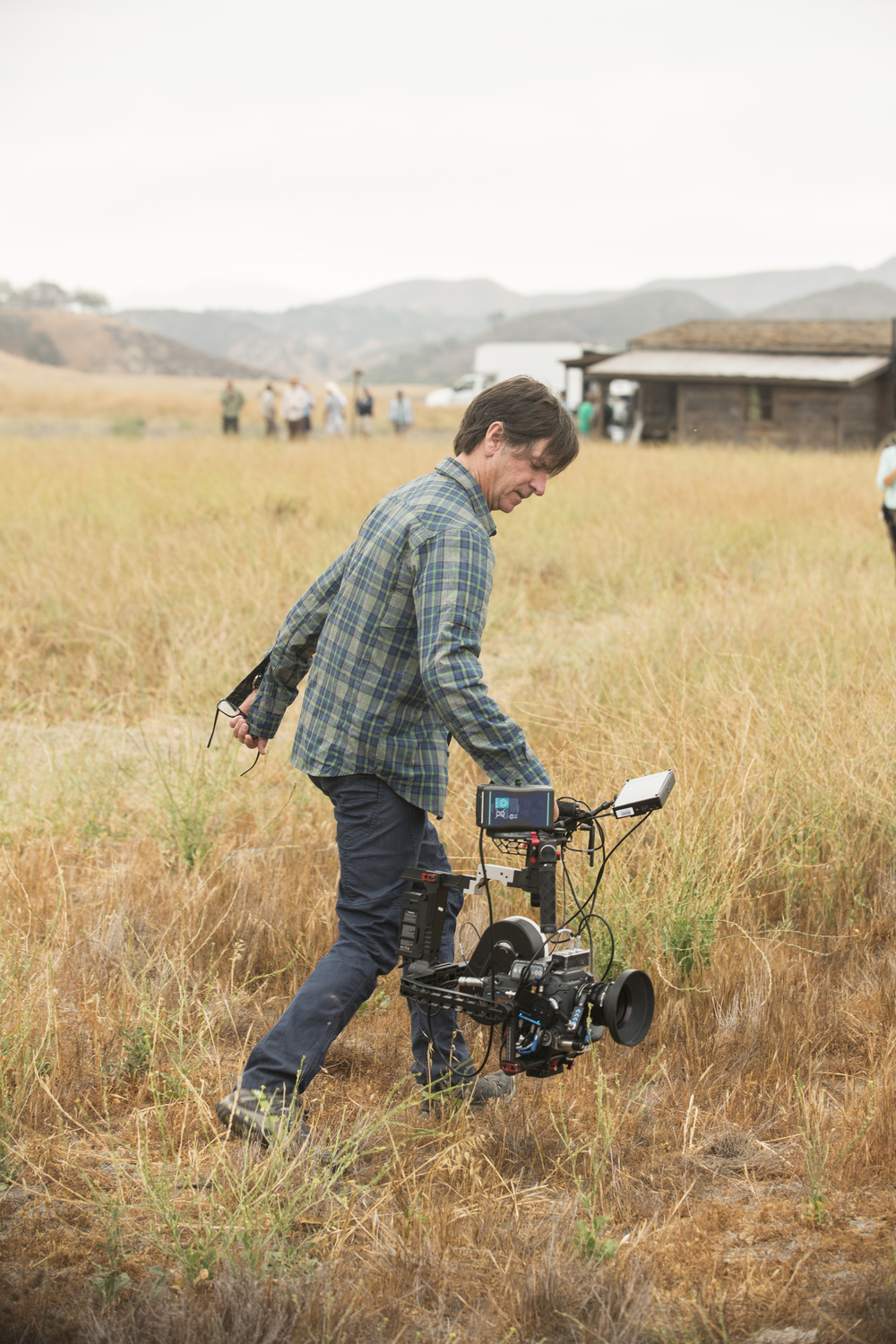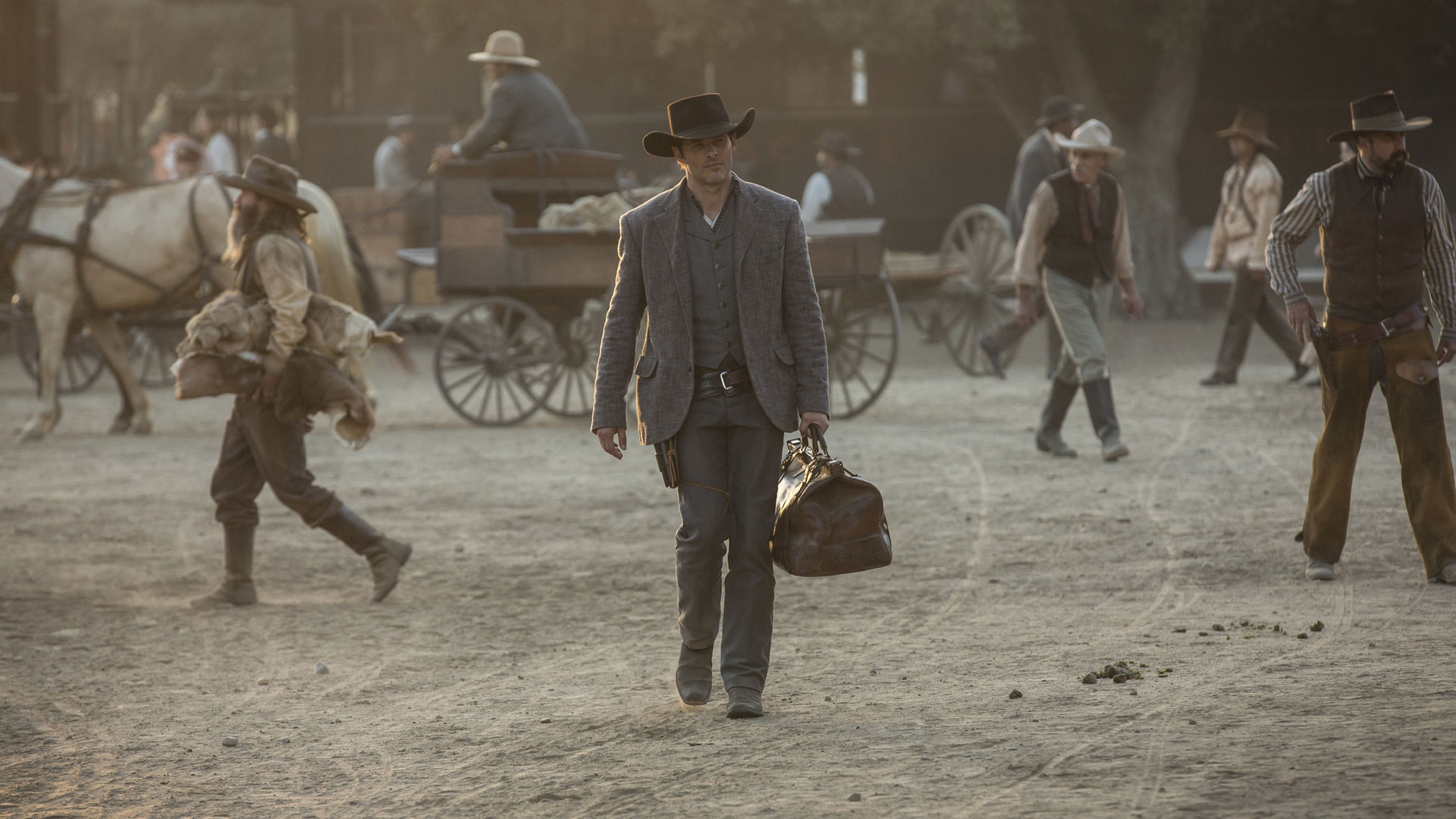
John P. Johnson/HBO
Director of photography Paul Cameron, ASC, has amassed some memorable cinematic credits, from the early Gone in Sixty Seconds remake and Swordfish, for director Dominic Sena, to Tony Scott’s Man on Fire and “Beat the Devil” segment of BMW’s short film series The Driver. He also shot part of the pioneering originated-on-digital Collateral for Michael Mann, and lensed the 2012 version of Total Recall. More recently, he lensed Pirates of the Caribbean: Dead Men Tell No Tales, but before embarking on that voyage, he shot the pilot installment of HBO’s Westworld, a thought-provoking reimagining of the 1973 low-budget sleeper written and directed by Michael Crichton. Attracting acting heavyweights that included Anthony Hopkins, Jeffrey Wright and Ed Harris, the first season of the series ultimately earned 22 Emmy nominations, including a nod for Cameron’s cinematography.
Studio Daily: Do you think your work on the pilot would have differed if you’d known more about where the series was headed?
Paul Cameron: No, I think given the script and the potential going in, it was pretty apparent there was going to be a real epic sense of scale to a high-quality production, plus it promised a lot of surprises with the storytelling choices. On the pilot, it was mainly about delivering the goods so HBO would approve production for the scripts that hadn’t yet been written, but co-showrunners Jonathan Nolan and Lisa Joy were well aware of the story arc.

Evan Rachel Wood (left) and James Marsden in Westworld.
John P. Johnson/HBO
How did the decision to originate on film come about?
It wasn’t five minutes into my meeting with Jonathan when I asked about the possibility. He replied that it wasn’t a possibility — we would definitely shoot film. That was a major plus to the project. We’re at a point in time with the industry when there is largely a single mindset about shooting digital. Even though there are ways to approach visuals creatively, many projects become acclimated to ProRes. Shooting on film is archival, and you’ve got image quality that works for 4K in all manner of release. Like his brother Christopher, Jonathan was aware of the creative benefits, and also understood the tradeoff with the economic issue. Perhaps saving the money by shooting with 200 extras instead of 500 is what makes the difference and lets you afford to shoot film.
Can you discuss the reasons for your camera, film stock and lens choices?
I used 35mm Arricam LT and 235s, shooting 3-perf [16:9], and most of the time I relied on Cooke [S-4] Primes and Fujinon Premier zooms. There were a few dream sequences from the perspective of hosts [the robot characters populating the park], and for those I went with vintage uncoated glass. Those Canon K35s suggested a different feel coming from those characters, something dark and a little mysterious. Daytime shooting was done on the slow, rich Kodak 50D Vision3 [5203] stock. It could handle the drastic extremes of going in and out of saloons to the bright sunlight outside and the colors were absolutely terrific, as were the blacks. I went to 250D [5207] for shooting at dusk because of the speed gain and the way it reads that kind of light. When we were in our many low-light control room interiors and night scenes, I chose 5219 500T.

Thandie Newton (left) and Rodrigo Santoro in Westworld
John P. Johnson/HBO
What did the workflow for dailies entail?
Fotokem handled processing, while Encore/Hollywood took care of dailies. As a DP, shooting film is such a different process. You’re still doing your lighting and matching and balancing on the day, which creates a certain level of reverence for the process. And that continues with the [Apple ProRes] dailies. We’d spent lunch in a trailer reviewing on a 65-inch plasma television. If we had captured digitally, there’d have been less people watching, and perhaps there wouldn’t even have been a trailer. Watching dailies on iPads and even on beautiful monitors from your home still nets a different response than the community feel that I got from our dailies.
Was coupling the marvelous look of that iconic Moab, Utah, location to the nearby Melody Ranch western town an idea you brought in?
One of the great experiences for me was getting to come on very early. Production designer Nathan Crowley was already working with Jonathan, and so there was a lot of conceptual art about both the western aspect and the operations center aspect and how they interrelated. I definitely wanted to use Moab, as I’d shot commercials there and you might say I knew the lay of the land and what was possible to do with the camera and staging. Jonathan and I did a lot of scouting and refined our notions for the shoot, working up camera placement ideas and finessing our shot list. Ideally, we’d have shot at Monument Valley to get that full John Ford western landscape. Then again, Ford shot some of his later films in Moab, so there was some sense of film history we revisited.

Visitors arrive in Westworld by train.
John P. Johnson/HBO
This incarnation of the western town from the 1973 film seems much richer in look.
Shooting on film for both pilot and series helped a lot. People are supposed to be spending a lot of money to visit this park, so going to a run-down, dirty western town would seem like a letdown to some. There had to be a certain opulence to the park, so when you step off the train, you’re in an environment with a fresher patina and higher-end accommodations than might otherwise be the case. Melody Ranch is a western ranch used in films for decades, so it was an easy call to keep to a classic western feel rather than over-stylize things. I was pretty conventional with my lighting for the exteriors, with Arrimax 18Ks. In addition to all we shot at Melody Ranch, we brought set walls with us out to Moab and could do reverse angles that tied into our town. We even brought a train car out to show James Marsden’s character passing through Moab before arriving in town.
To coordinate the Moab shoots with the Santa Clarita ones, how did you work out issues of sun position for continuity?
That was all very specifically mapped out. You try to shoot in the best possible light, and I was supported by the filmmakers to achieve this. I’d tell them that 4 p.m. is when the best backlight will be coming in at Moab, and a month later on set in Los Angeles everybody’d be respecting that original sun direction, so the quality and direction matched. It was very much a matter of web-weaving with making this all work. Shooting the town was a challenge, since that was close to Los Angeles in summer, so the sun was very high on long hot days. We’d block out a group of shots for one direction in mornings – and there was a lot of repetition, since you have those Groundhog Day bits of repetition –and the reverses on those in the afternoons. We had a few more days on the pilot than other eps, but it still was a tight [20-day] schedule.
The operational aspects of Delos and Westworld are a very striking contrast to the western look.
We decided to use a particular mountain in Moab as the basis. Within that mountain, we determined a layout of the place, knowing it goes 30 floors down. This gave us a level of cinematic reality on the pilot that was uncommonly strong, and it is due to the very creative nature of the collaboration. That isn’t always the case during prep, since DPs sometimes don’t come on till many of these decisions are already worked out and you then find yourself somewhat constrained by them.
The top level is where we located the Operations Center, and down a level from that is the Behavioral Unit, where hosts are programmed. There are design and manufacturing areas, which we could revamp for use as other sets, and all of that was done on stage. The bottom floor of the facility is where decommissioned hosts get stored. The backstory is that this was the original operations center, so it carries a sense of history while providing a visual contrast. Instead of building that, we went to the old Hawthorne Mall, and made that into our spooky old ‘basement.’

Anthony Hopkins (left) and Jeffrey Wright in Westworld.
John P. Johnson/HBO
With the control center, there’s that contemporary-to-futuristic snap and color and design. Did you use more of the newer types of lighting apparatus to help achieve this look?
The operations center was one of the greatest challenges for me. We looked at the Pacific Design Center [designed by Cesar Pelli] in L.A. and really liked the glass hallways and offices, using that as a model for our sets, to the point of making sure they would tie in with some scenes we shot at the actual Center. The control room was a big red plexiglass circle that reflected everything, so I had to bring the lighting in from above to hide the sources. Most of these stage sets were rigged with tungsten sources [LRX 12k Pars] that we brought down from overhead through diffusion. I also sprinkled MacTech LEDs throughout. I had to keep the lighting low, around 2.8 or less, because there was a big topographic park map in the center of the room, done with video projectors, and we didn’t want to wash out the image. There’s a certain level of ‘somebody is watching me’ paranoia in some science-fiction filmmaking, and on this series too.
My operators [A-camera/Steadicam Chris Haarhoff operator and B-camera Barry Idoine] helped give the impression that the camera was being controlled by an onlooker, which helps fuel that kind of feeling. We were only on occasion shooting single-camera, so both worked to convey that oddness through framing, in the way compositions get adjusted before settling.
HBO doesn’t mandate a 4K finish like Netflix and some other parties. How was the DI handled?
Encore colorist Shane Harris and I have worked together often, and he handled the DI. When you run neg through a Spirit, it is a different feeling entirely from using any digital capture system, where there are limitations to colorspace and how we can color-correct, so that was very exciting for me. The pilot and series were finished at 2K, with the visual effects done at 3K. Then about a month ago, we did an HDR transfer of the whole project for home video. There were issues with grain on the HDR; it is very quirky in how it picks up grain in some scenes and not others. We did tests with 4K scans and found that grain issue was actually more objectionable than with the 2K scans. A lot of people think in terms of resolution or pixels. But nobody ever measured the amount of pigment in paint [laughs], so I encourage people not to get caught up in an intellectual exercise over numbers, and concentrate instead on the toolset that gives you an appropriate look.
Crafts: Shooting
Sections: Creativity
Topics: 35mm arricam 235 arricam lt film's not dead HBO pilots westworld
Did you enjoy this article? Sign up to receive the StudioDaily Fix eletter containing the latest stories, including news, videos, interviews, reviews and more.









